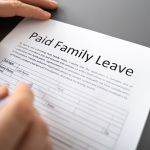Family and Medical Leave Act (FMLA) coverage for the care of a domestic partner has changed over the last several years—particularly under the Wisconsin FMLA.
History of Domestic Partnerships
In 2009, the Wisconsin Legislature passed legislation that addressed two types of coverage for domestic partners. Chapter 770 of the Wisconsin statutes, applicable to all employers, defined the criteria for forming and registering a domestic partnership in the state, a process that would make same-sex domestic partners eligible for Wisconsin FMLA. Chapter 40 of the statutes covers the state’s Department of Employer Trust Funds and defines how this fund would impact domestic partners.
In 2015, the U.S. Supreme Court’s landmark decision, Obergefell v. Hodges, held that state bans on same-sex marriage and failing to recognize same-sex marriages performed in other jurisdictions are unconstitutional. This decision made any law banning gay marriage unenforceable, requiring all 50 states to recognize same-sex marriages.
In 2017, Wisconsin state legislators amended Chapter 770 by ending the registry for domestic partnerships effective April 1, 2018.
Impact on FMLA
Wisconsin
The state’s FMLA references the definition of domestic partners and domestic partnerships found in both Chapters 770 and 40 when defining coverage under the law. Chapter 770 defines a domestic partnership as follows:
770.05 Criteria for forming a domestic partnership. Subject to s.770.07 (1) (a), two individuals may form a domestic partnership if they satisfy all of the following criteria:
(1) Each individual is at least 18 years old and capable of consenting to the domestic partnership.
(2) Neither individual is married to, or in a domestic partnership with, another individual.
(3) The two individuals share a common residence. Two individuals may share a common residence even if any of the following applies:
(a) Only one of the individuals has legal ownership of the residence.
(b) One or both of the individuals have one or more additional residences not shared with the other individual.
(c) One of the individuals leaves the common residence with the intent to return.
As a result of the state law and the ruling in Obergefell v. Hodges, employees who have entered into either a same-sex domestic partnership or a same-sex marriage will be covered under Wisconsin FMLA.
Federal
The Department of Labor’s Wage and Hour Division defines the term “spouse” as it relates to FMLA in Fact Sheet 28L as follows:
“Definition of spouse. Under the FMLA, spouse means a husband or wife as defined or recognized in the state where the individual was married, including individuals in a common law marriage and married same-sex couples. Spouse also includes a husband or wife in a marriage that was validly entered into outside of the United States if the marriage could have been entered into in at least one state. Individuals in civil unions and domestic partnerships are not considered spouses under the FMLA …”
As such, federal FMLA is only available to same-sex employees who have entered into marriage.
Determining Status
Employers should be consistent when requesting documentation related to marital status, when an employee requests leave to care for their spouse. If documentation confirming marital status is not required of non-same-sex married employees, it should not be required of same-sex married employees.
Wisconsin employers may either request a copy of a registered domestic partner relationship, provided it was entered into before April 1, 2018, or request that the employee requesting leave complete an attestation indicating the relationship meets the definition of a domestic partnership under Chapter 770.05 of the Wisconsin statutes. Consistency in application is a key factor in administering state leave.






